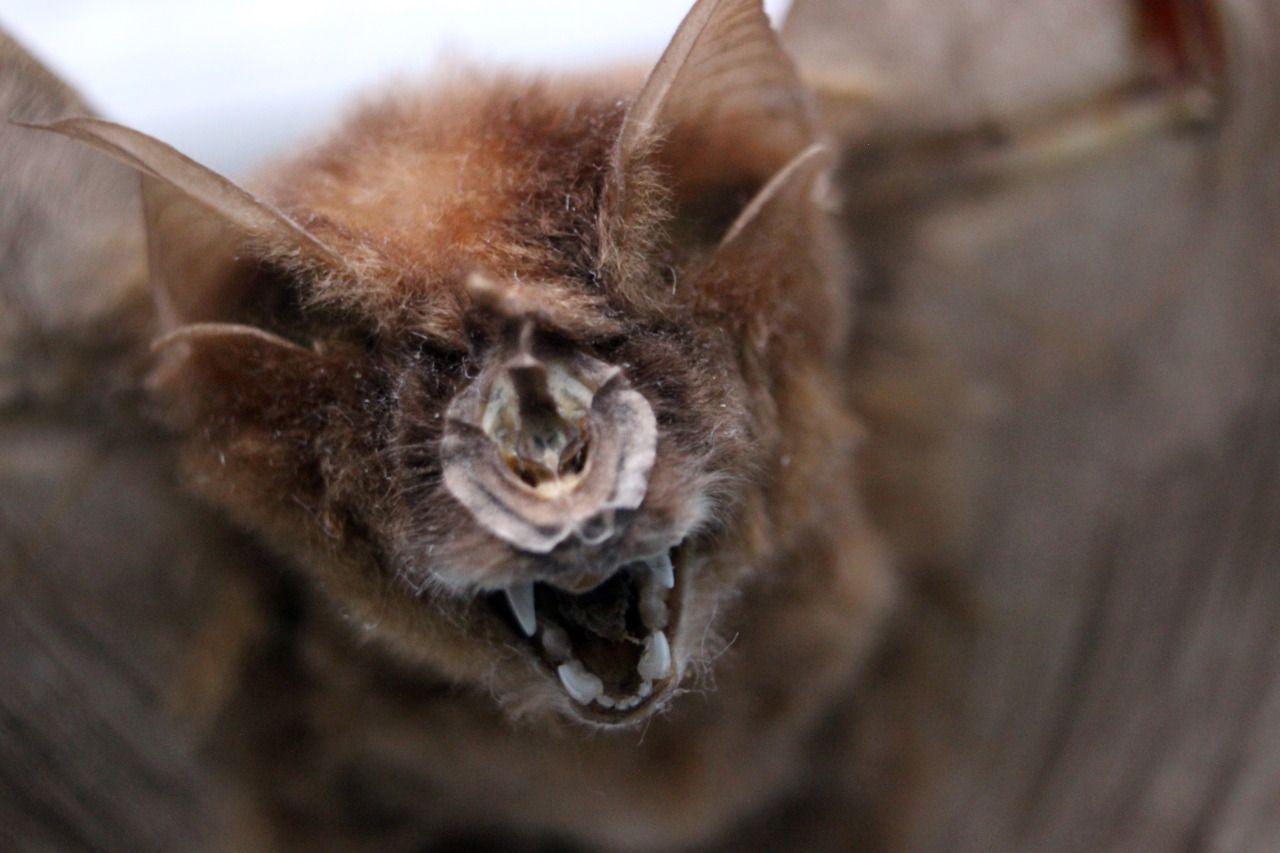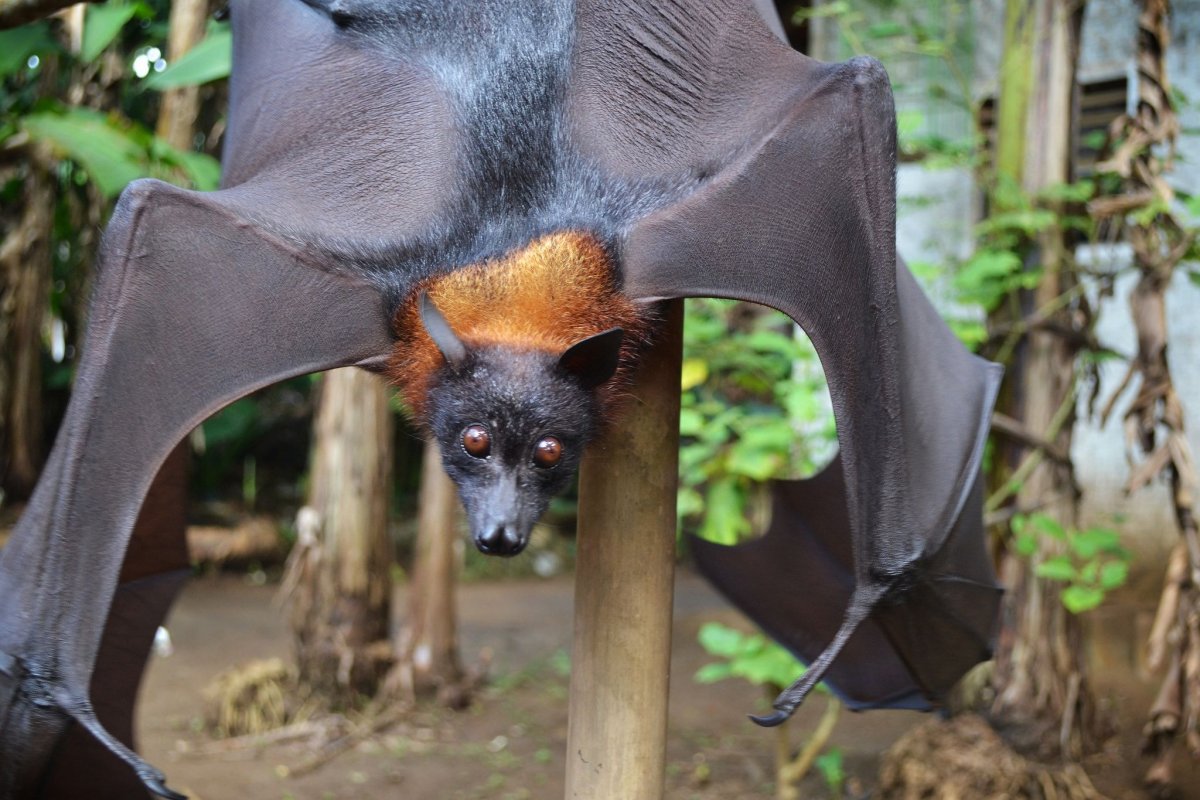
Update | In Southeast Asia, bats are being killed by the thousands, and many of the dead bodies end up on eBay and Etsy.
Between mid-2000 and 2013, the United States imported 114,927 bats. A total of 113,200 of those bats were dead—that's nearly 9,000 slaughtered bats per year. Some of these bats end up for sale on eBay, Etsy, Facebook, Instagram and in brick-and-mortar oddities stores.
The carnage has some conservationists and bat enthusiasts worried. Merlin Tuttle, a bat expert at Merlin Tuttle's Bat Conservation, notes the extreme plight of bats in Southeast Asia. "I've seen huge losses, mostly due to various kinds of over-harvesting, especially at cave entrances, either for food or for sale as mummies," Tuttle wrote in an email to Newsweek. He says a cave that used to house hundreds of thousands of bats at a time is now completely empty.
These bats come from countries all over the world, including China and Indonesia, the leading exporter of legally cleared wildlife shipments into the United States. But the legal requirements for export do not require an explanation of how, why or by whom the animals were killed.
And the legality of those deaths is highly questionable. The phrase "ethically sourced" appears on many listings of dead bats for sale. Some sellers note that no animals were killed or poached. But Tuttle says such sound practice cannot possibly hold true for all sellers. "It is a virtual certainty that the bats you've seen advertised are not sustainably harvested," he writes. "Any bat that died naturally would be quickly destroyed by ants or other arthropods or consumed by a scavenger."
Some fruit growers kill some of the kinds of bats being sold in order to protect their crops. But, says Tuttle, bats that are killed by durian fruit farmers are collected in nets and decompose until the net is full and drops. These bats would not be suitable for mummifying and selling on eBay.
Those who say they got their bats from a bat farm are "definitely lying" because there is no such thing as a bat farm, Tuttle says. Bats are very difficult to breed in captivity and only birth one to two baby bats (pups) per female annually.

Who is buying all these bat carcasses? Newsweek filed a Freedom of Information Act request with the Department of the Interior to find out.
Between January 1, 2016, and October 4, 2017, the date of the request, U.S. Fish and Wildlife Services recorded 22,426 bats imported into the United States. Newsweek added up the non-redacted numbers from an Excel file, which is available here (the column at the end titled "Academic or No" was added by Newsweek).
Newsweek looked through the U.S. importers and added descriptors determining whether or not the source was academic. That includes universities, museums, and research facilities like the Centers for Disease Control and Prevention. Non-academic sources included individuals and gift shops called No Parking on Pike, The Real Insect Co., and Vegas Internet LLC.
Of the totaling bats sent to each destination, 5,334 bats went to non-academic sources, such as individuals and gift shops, over the course of 1.75 years; 23 percent of the total. Because of redactions and some unknown destinations, 7 percent went to uncategorized sources.
Certain alternative communities, such as taxidermists, oddities collectors and certain subcultures, may be fueling demand. "A huge part of our following is the gothic community," says Joseph D'Angeli, a bat conservationist known as "the New Jersey Batman." He emphasizes that most people in the "goth" subculture "wouldn't be caught dead hanging these dead bats around." But some, he explains, believe that owning mummified bats is cool and edgy, like Ozzy Osbourne famously biting the head off of one. (Notably, D'Angeli has himself bought a bat skeleton.)
Allison White, a research scientist with EcoHealth Alliance, a nonprofit focused on wildlife and emerging diseases, helped Newsweek understand a deeper range of U.S. bat imports from mid-2000 to 2013. White looked at a backlog of the organization's data collected from the U.S. Fish and Wildlife Service's Law Enforcement Management Information System (FWS LEMIS) and searched out the name of every species of bat. White found these bat shipments came in over 12 and a half years:
There were 2803 total shipments involving bats across all categories.
- Live bats: 59 shipments; 1,727 total live bats
- Dead bats-whole body: 390 shipments, totaling 44,398 dead bats.
- Bat skeletons (substantially whole): 119 shipments; 6,641 bat skeletons
- Specimens (scientific or museum): 2,096 shipments; 58,456 specimens (There were also 6KG of bat specimens in those shipments)
- Skulls: 70 shipments; 1,978 skulls
Of the 2,734 total shipments in those categories, 96 of them were refused entry to the U.S. (2,638 were cleared). "Refused" includes shipments that were abandoned (n =6), re-exported (n = 26), or seized (n = 64).
These numbers may be conservative because many imports are simply never seen. Legally importing bats requires an import/export license with the U.S. Fish and Wildlife Service, which costs $100 per year. The exporter must include a CITES (Convention on International Trade of Endangered Species of Wild Flora and Fauna) export paper and documentation that the animals were preserved in a way that would kill off any diseases.
But importing off the radar may not be that difficult, leaving many dead bat arrivals uncounted. "I think it's under-reported because all they know is what they find," says William Karesh, executive vice president for health and policy at EcoHealth Alliance. "Fish and Wildlife doesn't have the staffing levels to monitor every bag, every suitcase, every box, every container that comes to every port."
Bats are vitally important to Indonesian ecosystems. "Durian sell for billions of dollars annually in [Southeast] Asia and are extremely difficult to produce without bats to pollinate them, even in orchards," says Tuttle.
"Also, there is a strong animal rights community who would be quite upset about these cute and highly intelligent and beneficial animals being slaughtered for souvenir mummies," he says.
This article has been updated with data from the Department of the Interior, per a Freedom of Information Act Request made on behalf of Newsweek.
Uncommon Knowledge
Newsweek is committed to challenging conventional wisdom and finding connections in the search for common ground.
Newsweek is committed to challenging conventional wisdom and finding connections in the search for common ground.
About the writer
Kristin is a science journalist in New York who has lived in DC, Boston, LA, and the SF Bay Area. ... Read more
To read how Newsweek uses AI as a newsroom tool, Click here.








